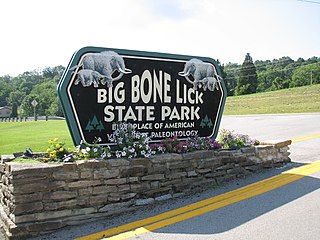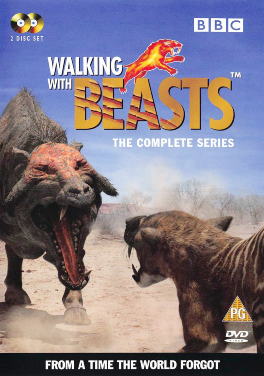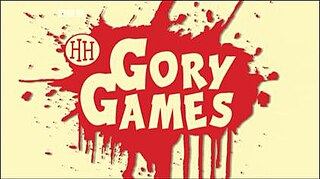
A mammoth is any species of the extinct elephantid genus Mammuthus. The various species of mammoth were commonly equipped with long, curved tusks. They lived from the Pliocene epoch into the Holocene about 4,000 years ago, and various species existed in Africa, Europe, Asia, and North America. Mammoths are more closely related to living Asian elephants than African elephants.

Horrible Histories is a series of illustrated history books published in the United Kingdom by Scholastic, and part of the Horrible Histories franchise. The books are written by Terry Deary, Peter Hepplewhite, and Neil Tonge, and illustrated by Martin Brown, Mike Phillips, Philip Reeve, and Kate Sheppard.

Since the publication of the Book of Mormon in 1830, Mormon archaeologists have attempted to find archaeological evidence to support it. Although historians, archaeologists, and those outside the religion who have examined the topic consider the book to be an anachronistic invention of Joseph Smith, many members of the Church of Jesus Christ of Latter-day Saints and other denominations of the Latter Day Saint movement believe that it describes ancient historical events in the Americas.

Big Bone Lick State Park is located at Big Bone in Boone County, Kentucky. The name of the park comes from the Pleistocene megafauna fossils found there. Mammoths are believed to have been drawn to this location by a salt lick deposited around the sulfur springs. Other animals including forms of bison, caribou, deer, elk, horse, mastodon, moose, musk ox, peccary, ground sloths, wolves, black bears, stag moose, saber-toothed cats, and possibly tapir also grazed the vegetation and salty earth around the springs that the animals relied on for their diet.

Walking with Beasts, marketed as Walking with Prehistoric Beasts in North America, is a 2001 six-part nature documentary television miniseries created by Impossible Pictures and produced by the BBC Natural History Unit, the Discovery Channel, ProSieben and TV Asahi. The sequel to the 1999 miniseries Walking with Dinosaurs, Walking with Beasts explores the life in the Cenozoic era, after the extinction of the non-avian dinosaurs, particularly focusing on the rise of the mammals to dominance. The UK version of the series is narrated by Kenneth Branagh, who also narrated Walking with Dinosaurs, and the US version is narrated by Stockard Channing.

The Columbian mammoth is an extinct species of mammoth that inhabited the Americas as far north as the Northern United States and as far south as Costa Rica during the Pleistocene epoch. The Columbian mammoth descended from the Eurasian mammoths that colonised North America around 1.5 million years ago, that later hybridised with woolly mammoths during the Middle Pleistocene, prior to 420,000 years ago. The Columbian mammoth was among the last mammoth species, and the pygmy mammoths evolved from them on the Channel Islands of California. The closest extant relative of the Columbian and other mammoths is the Asian elephant.

Murderous Maths is a series of British educational books by author Kjartan Poskitt. Most of the books in the series are illustrated by illustrator Philip Reeve, with the exception of "The Secret Life of Codes", which is illustrated by Ian Baker, "Awesome Arithmetricks" illustrated by Daniel Postgate and Rob Davis, and "The Murderous Maths of Everything", also illustrated by Rob Davis.
Elizabeth Levy is an author who has written over eighty children's books in a variety of genres. Born in Buffalo, New York, she is currently living in New York City. She has appeared as a contestant on "Funny Or Die's Billy on the Street" on TruTV. She is a cousin of children's author Robie Harris.

The steppe mammoth is an extinct species of mammoth that ranged over most of northern Eurasia during the Early and Middle Pleistocene, approximately 1.8 million-200,000 years ago. It evolved in East Asia during the Early Pleistocene, around 1.8 million years ago, before migrating into North America around 1.5 million years ago, and into Europe during the Early/Middle Pleistocene transition, around 1 to 0.7 million years ago. It was the ancestor of the woolly mammoth and Columbian mammoth of the later Pleistocene. Populations of steppe mammoth may have persisted in northern China and Mongolia as late as 33,000 years ago.

Mound Cemetery in Marietta, Ohio, is a historic cemetery developed around the base of a prehistoric Adena burial mound known as the Great Mound or Conus. The city founders preserved the Great Mound from destruction by establishing the city cemetery around it in 1801.
Horrible Histories is an educational entertainment franchise encompassing many media including books, magazines, audio books, stage shows, TV shows, and more.

The woolly mammoth is an extinct species of mammoth that lived during the Pleistocene until its extinction in the Holocene epoch. It was one of the last in a line of mammoth species, beginning with the African Mammuthus subplanifrons in the early Pliocene. The woolly mammoth began to diverge from the steppe mammoth about 800,000 years ago in East Asia. Its closest extant relative is the Asian elephant. The Columbian mammoth lived alongside the woolly mammoth in North America, and DNA studies show that the two hybridised with each other.

Painting in the Americas before European colonization is the Precolumbian painting traditions of the Americas. Painting was a relatively widespread, popular and diverse means of communication and expression for both religious and utilitarian purpose throughout the regions of the Western Hemisphere. During the period before and after European exploration and settlement of the Americas; including North America, Central America, South America and the islands of the Caribbean, the Bahamas, the West Indies, the Antilles, the Lesser Antilles and other island groups, indigenous native cultures produced a wide variety of visual arts, including painting on textiles, hides, rock and cave surfaces, bodies especially faces, ceramics, architectural features including interior murals, wood panels, and other available surfaces. Many of the perishable surfaces, such as woven textiles, typically have not been preserved, but Precolumbian painting on ceramics, walls, and rocks have survived more frequently.
Anthony Francis Aveni is an American academic anthropologist, astronomer, and author, noted in particular for his extensive publications and contributions to the field of archaeoastronomy. With an academic career spanning over four decades, Aveni is recognized for his influence on the development of archaeoastronomy as a discipline in the latter 20th century. He has specialized in the study of ancient astronomical practices in the Americas, and is one of the founders of research into the historical astronomy of pre-Columbian Mesoamerican cultures. He held an endowed chair as the Russell Colgate Distinguished University Professor of Astronomy and Anthropology and Native American Studies at Colgate University, in Hamilton, New York, where he is now an emeritus professor.

Prehistory of Ohio provides an overview of the activities that occurred prior to Ohio's recorded history. The ancient hunters, Paleo-Indians, descended from humans that crossed the Bering Strait. There is evidence of Paleo-Indians in Ohio, who were hunter-gatherers that ranged widely over land to hunt large game. For instance, mastodon bones were found at the Burning Tree Mastodon site that showed that it had been butchered. Clovis points have been found that indicate interaction with other groups and hunted large game. The Paleo Crossing site and Nobles Pond site provide evidence that groups interacted with one another. The Paleo-Indian's diet included fish, small game, and nuts and berries that gathered. They lived in simple shelters made of wood and bark or hides. Canoes were created by digging out trees with granite axes.

Horrible Histories: Gory Games is a children's game show, co-produced by Citrus Television and Lion Television for CBBC, that debuted in 2011. It is a spin-off of hit children's sketch comedy Horrible Histories and is a product of the same creative team.

Robert O'Hara is an American playwright and director. He has written Insurrection: Holding History and Bootycandy. Insurrection is a time traveling play exploring racial and sexual identity. Bootycandy is a series of comedic scenes primarily following the character of Sutter, a gay African American man growing from adolescence to manhood. It won the Lambda Literary Award for LGBT Drama. O’Hara was nominated for the 2020 Tony Award for Best Direction of a Play for his contribution to Slave Play.
The Yana Rhinoceros Horn Site is an Upper Palaeolithic archaeological site located near the lower Yana river in northeastern Siberia, Russia, north of the Arctic Circle in the far west of Beringia. It was discovered in 2001, after thawing and erosion exposed animal bones and artifacts. The site features a well-preserved cultural layer due to the cold conditions, and includes hundreds of animal bones and ivory pieces and numerous artifacts, which are indicative of sustained settlement and a relatively high level of technological development. With an estimated age of around 32,000 calibrated years before present, the site provides the earliest archaeological evidence for human settlement in this region, or anywhere north of the Arctic Circle, where people survived extreme conditions and hunted a wide range of fauna before the onset of the Last Glacial Maximum. The Yana site is perhaps the earliest unambiguous evidence of mammoth hunting by humans.
This page lists significant events of 2022 in archaeology.












